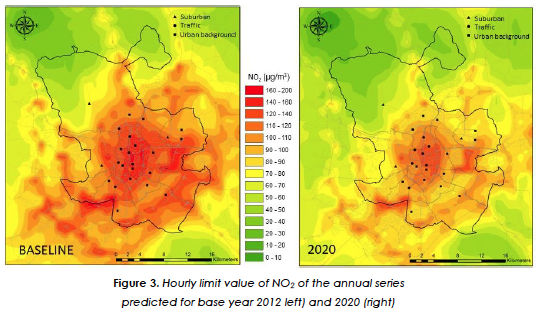In a post last year, I called attention to the leadership that some of the world’s great cities are beginning to play in the adoption of new technologies and the transition to a low carbon economy. A few weeks ago the Mayor of Madrid, Manuella Carmena, has put in place a far reaching action plan placing the city at the vanguard of this movement.
The plan has been developed looking deeply at the current situation as well as the applicable legislation and has 21 different lines of action which are all in designed to assure that Madrid continues to be a livable, sustainable and attractive city for decades to come. While the plan has 30 action items, the heart of the proposal is to restrict traffic to the city center itself and went into effect a couple of weeks ago. An english summary of the plan is available here.
 Under the new regulations only certain vehicles can enter the city center. These include:
Under the new regulations only certain vehicles can enter the city center. These include:
- Residents and their guests
- Taxis
- Motor bikes
- Vehicles for the handicapped
- Zero emission vehicles or electric cars
- Car sharing
- Public transport
- Cars using public parking facilities
- Industrial vehicles during approved loading and unloading hours
Other aspects of the plan re-configure the main distribution channels of traffic and mobility in and out of the city and have a strong bias towards favoring bicycles and pedestrian traffic as well as new types of urban transport such as Segways and other electric scooters, etc.
Much of the city will be under a speed limit of 30 KM/hr (18.6 MPH) and there will be a combination of car parks rail service, metro and bus lanes to make public transportation the best way to get into the city.
Buses and taxis will be gradually transitioned to low emissions as will distribution trucks and vans which will also require registration with the city.
While some might argue that the city is going too far and that such regulation will limit its appeal, what is clear is that the air quality of Madrid is currently unacceptable. What I like most about the Mayor’s attitude is that she see her job as assuring that the lives of the city’s residents, i.e the people that elected her, will be as healthy as possible. Looking ahead to 2020 and beyond, it was clear to her government that something had to be done. The chart below indicates what a simulation says will happen to Nitrogen Dioxide with the new plan by 2020.
The World Health Organization has identified outside air pollution to be one of the most urgent issues facing the world and provides a huge amount of data on the issue.
The opposition to the plan in Madrid express concern that business will flee the city due to its restrictive policies but the Mayor and her cabinet believe the opposite is true. Their view is that companies are leaving the city because of the terrible traffic and difficulties in getting in a and out of the city.
By making sure the city is livable and sustainable, they are betting that it will become even more vibrant than ever and attract high tech knowledge workers and the firms that employ them and thus assure the city’s future.
If I lived in Madrid I would start shopping for an electric car and get a rail pass!


